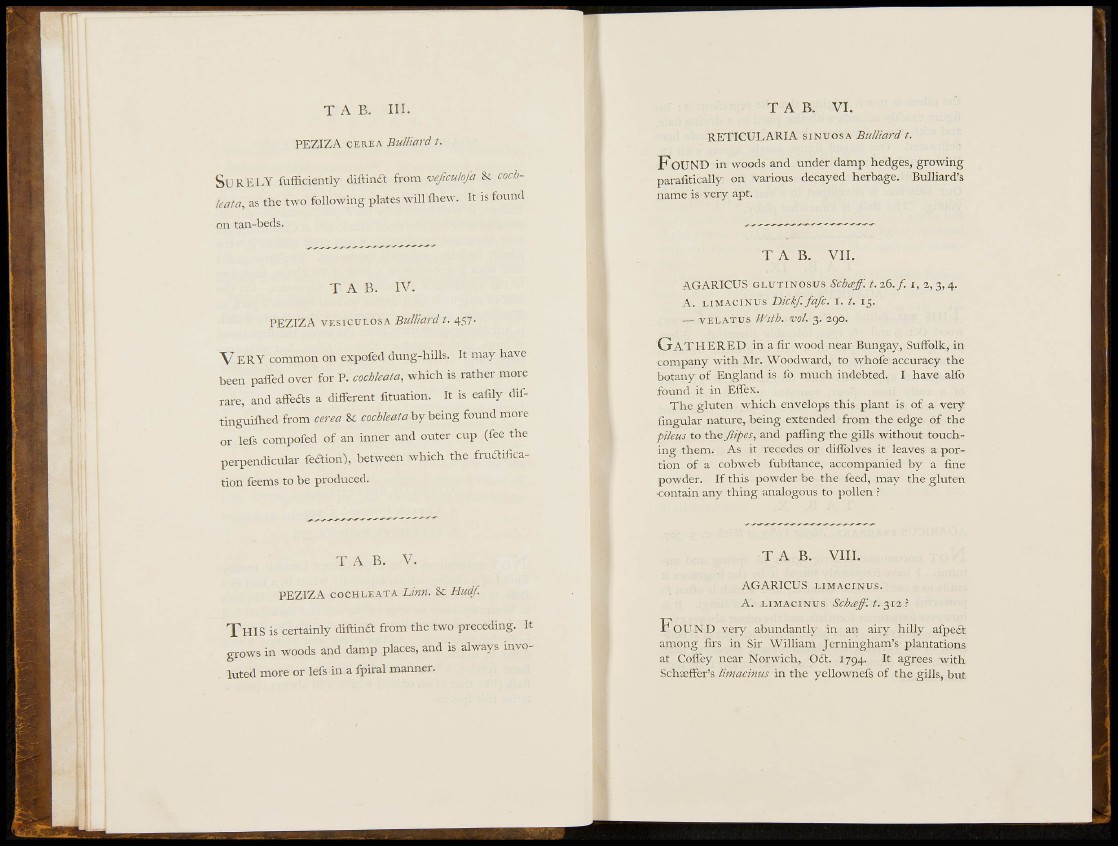
J {
T A B . III.
PEZIZA CEREA BuUiard t.
SU RELY fufficiently diftinft from veficutoja & cochkata,
as the two following plates will fliew. It is found
on tan-beds.
T A B . IV.
PEZIZA VESICULOSA Bulliard t. 4S7-
V E R Y common on expofed dung-hills. It may have
been pafTed over for P. cochleata, which is rather more
rare, and affeas a different fituation. It is eafily diftinguiflred
from cerea & cochkatahyhtrng found more
or lefs compofed of an inner and outer cup (fee the
perpendicular feftion), between which the fraftification
feems to be produced.
T A B. V.
PEZIZA COCHLEATA Linti. & Hudf.
T H I S is certainly diftina from the two preceding. It
grows in woods and damp places, and is always involuted
more or lefs in a fpiral manner.
T A B. VI.
RETICULARIA SINUOSA Bulliard t.
FOUND in woods and under damp hedges, growing
parafitically on various decayed herbage. Bulliard's
name is very apt.
T A B . VII.
AGARICUS GLUTINOSUS Schaff. t. 2.6./. I, 2, 3,4.
A. LIMACINUS Dickf. fafc. I. t. 15.
— VELATUS With. vol. 3. 290.
GATHERED in a fir wood near Bungay, Suffolk, in
company with Mr. Woodward, to whofe accuracy the
botany of England is fb much indebted. I have alfo
found it in ElTex.
The gluten which envelops this plant is of a very
Angular nature, being extended from the edge of the
pileus to the Jlipes, and pailing the giUs without touching
them. As it recedes or diffolves it leaves a portion
of a cobweb fubftance, accompanied by a fine
powder. If this powder be the feed, may the gluten
•contain any thing analogous to pollen ?
T A B . VIII.
AGARICUS LIMACINUS.
A. LIMACINUS Schaff. t.'¡11:
t o U N D very abundantly in an airy hilly afpea
among firs in Sir William Jerningham's plantations
at ColTey near Norwich, Oa. 1794. It agrees with
SchtefEer's limacinus in the yellownefs of the gills, but